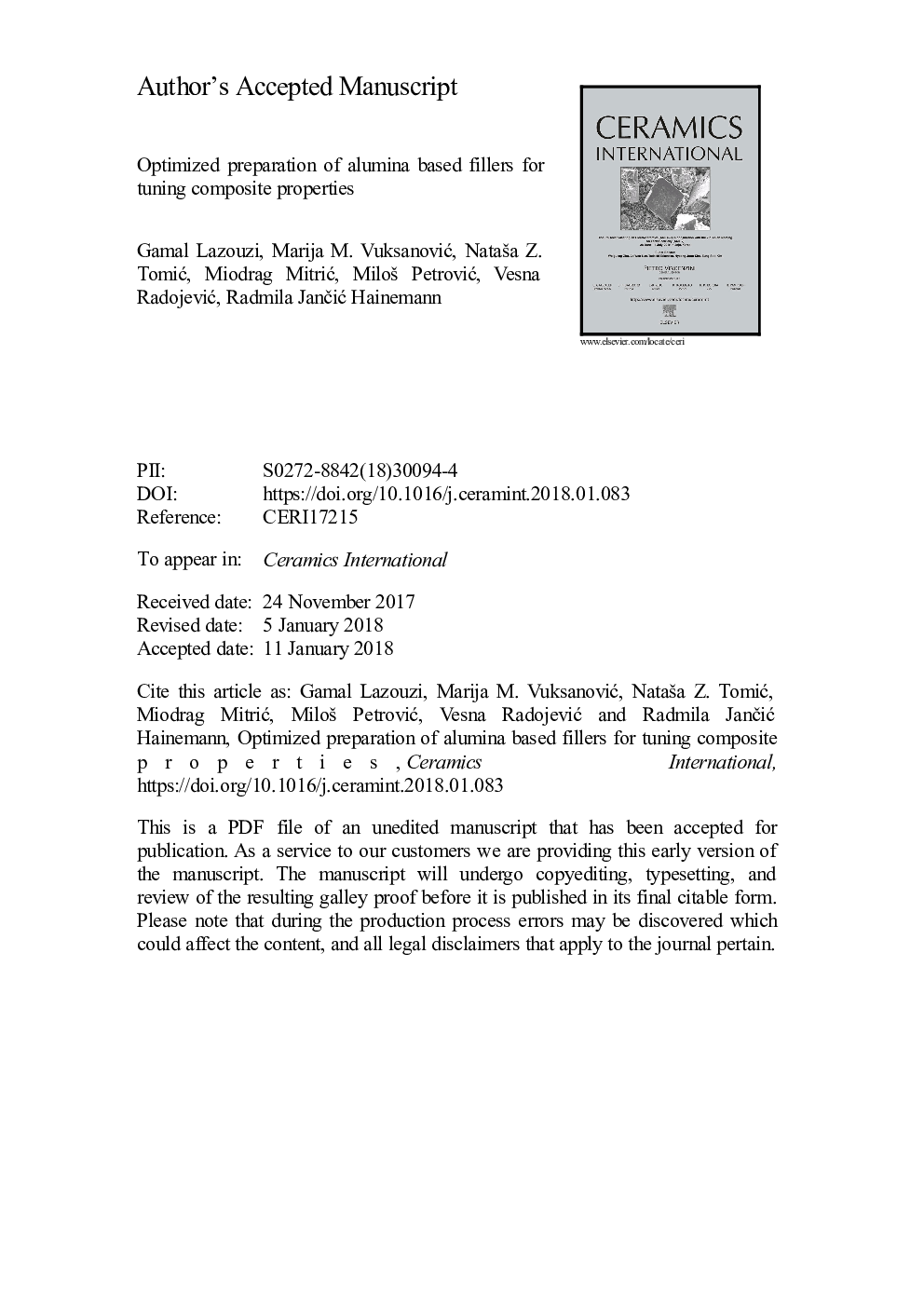| Article ID | Journal | Published Year | Pages | File Type |
|---|---|---|---|---|
| 7887436 | Ceramics International | 2018 | 24 Pages |
Abstract
Alumina based particles were prepared from aluminium chloride hydroxide as starting material by sol-gel technique. One series of particles was doped with ferrous oxide. Both series of particles were calcinated at three different temperatures: 700â¯Â°C, 800â¯Â°C and 900â¯Â°C. Poly(methyl methacrylate), PMMA, was used as a matrix and two different types of alumina based particles were added into the matrix to form the composites. All composites consisted of 3â¯wt% of alumina based particles. The aim of this study was to examine whether and how the temperature of particle calcination affects the microhardness and mechanical properties of the composite. The particles were characterized by the X-ray diffraction (XRD) and physical absorption methods. The morphology of the composites was examined using a field emission scanning electron microscope (FESEM). The microhardness of composites was measured using a traditional Vickers hardness (HV) method. The mechanical characteristics of obtained composites were determined using tensile test and impact testing.
Related Topics
Physical Sciences and Engineering
Materials Science
Ceramics and Composites
Authors
Gamal Lazouzi, Marija M. VuksanoviÄ, NataÅ¡a Z. TomiÄ, Miodrag MitriÄ, MiloÅ¡ PetroviÄ, Vesna RadojeviÄ, Radmila JanÄiÄ Heinemann,
